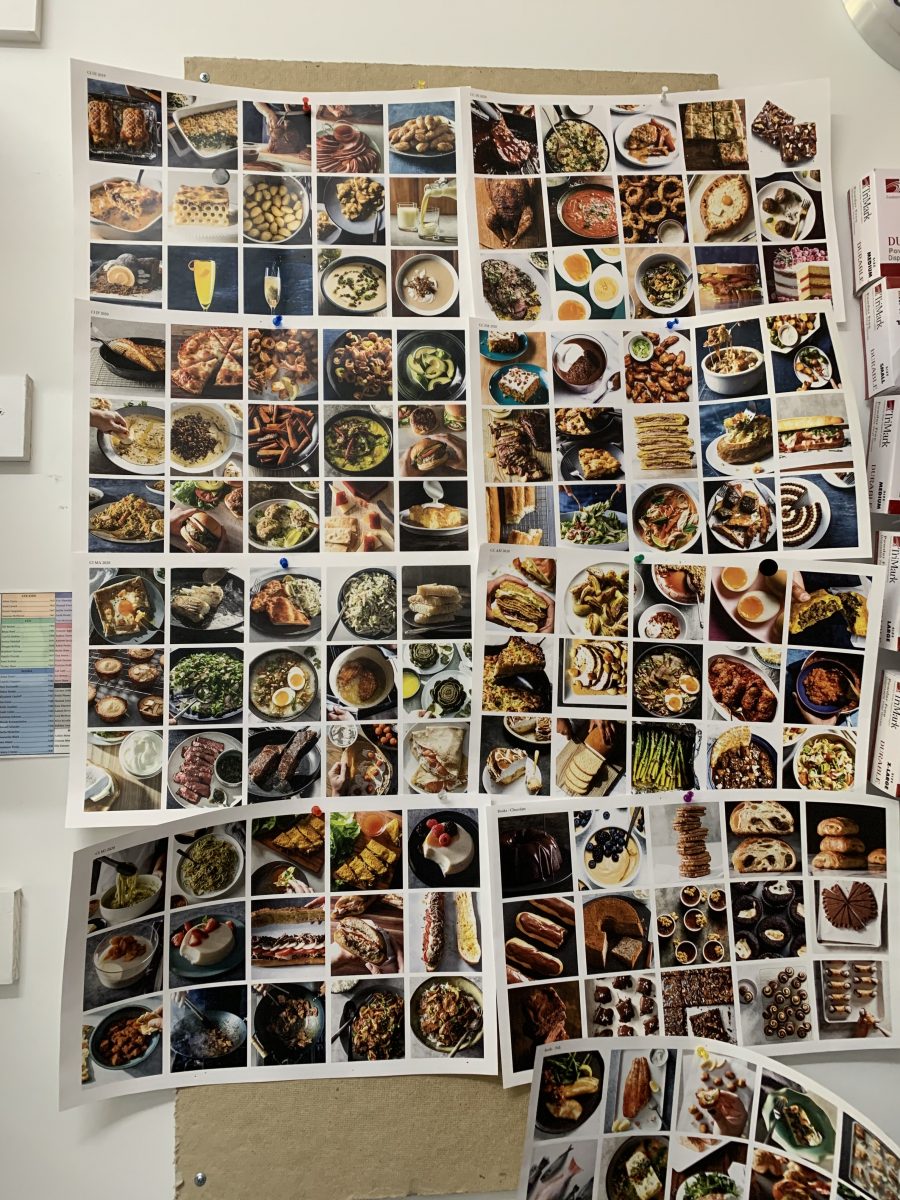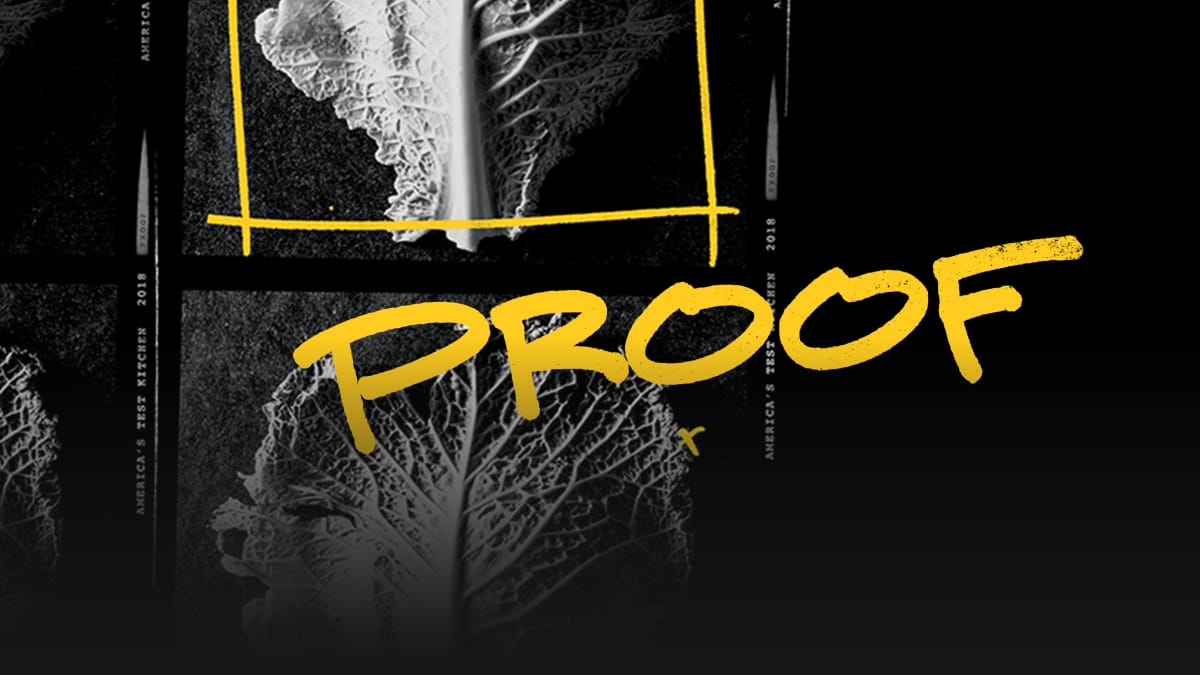The challenging — and delicious — adventures of producing the first America’s Test Kitchen podcast
Kaitlin Keleher, America’s Test Kitchen TV & podcast producer, believes the most powerful stories are the background tales about food: the discoveries, mysteries, history and everything that happened before any food came to be.
That’s the idea behind America’s Test Kitchen first podcast, “Proof.”
After almost eight years of working in America’s Test Kitchen — where she went from intern to working on the production team — Keleher pitched the idea for the show along with podcast host Bridget Lancaster.
“Proof tells unexpected food stories that feed the curious mind,” said Keleher.
The team was looking to tell character-driven stories through the lens of food. The result was a narrative show that uncovers food mysteries and answers questions like: How did Jelly Belly create a stinky sock-flavored jelly bean? Or how did celery go from the “it” vegetable of the Victorian era to a forgettable vegetable?
Storybench spoke with Keleher about the experience of producing the podcast, the creative challenges behind it and the audio-storytelling techniques implemented in the world of food journalism.
How did the idea for the podcast come to be?
The thing I love about podcasting is that it’s so much more flexible as a format. It’s as long as it needs to be, there’s a lot more flexibility in storytelling because you’re not matching a broadcast clock. America’s Test Kitchen used to have a radio show called America’s Test Kitchen Radio that was a broadcast radio show.
When we stopped making the radio show a few years ago, I pitched the idea for the podcast to the CEO and managers. I wanted to make a show that I would like listening to, which are narrative and character-driven. I also wanted to do something that felt authentic to the brand. A big part of it is about deep-dive investigations, about how do you get the perfect recipe or how do you understand the science behind a technique. And so I thought, how do you apply that to storytelling? And the answer was like “let’s get to the bottom of these backstories about food.”

What challenges did you face when you began producing the podcast?
Many. It’s one thing to be an audio consumer, but it’s another thing to figure out the nuts and bolts of how you make a new show. And there’s so many questions like “where do you begin, what is the format, what kinds of stories do you tell, how to make an intro?” There are all kinds of creative and logistical questions to answer about how you put the show together. We’ve just gotten smarter and better over time and we have a good system now, but it was a brand new workflow to design.
Can you say that you are constantly learning from mistakes?
Always, that’s always the way it goes. Mistakes or just things that didn’t work out quite the way you want. So like if there’s a story that didn’t reach its full potential, it’s easy to be disappointed about that, but it’s also great to train yourself to look at how it could have been different and better.
What is the process behind producing a Proof story?
First, we put out a call for pitches into the community of radio and podcast and we invite people to pitch story ideas based on a very specific set of criteria that we’ve refined over time. Working with freelance writers and reporters is a wonderful process because you’re able to cast the net so much wider and work with a ton of talented people who can just cover more subjects than you’d be able to.
What happens after choosing the story idea?
We’ll put together sort of a fantasy outline of what the story would be, which turns into their reporting plan. Typically our producer Sarah Joyner and I are doing reporting check-ins. Once all the reporting is complete, we do a big storyboarding process where we lay out the structure.
With audio, we’re working with tape, so you’ll have hours and hours of tape. We need that moment to step back and say “I’ve completed the reporting, now what is the structure that tells the story most compellingly?” Then we start doing rounds and rounds of scripts before any tape is cut.
Our host is involved in every part of the process too, from pitch-evaluation to scripting … She’s involved at every stage, has strong creative opinions and influence over the tone of the show.
Tell me about your experience producing the first episode of Proof?
The first episode was “Celery.” It was a very nerve-wracking process because we didn’t know simple aspects like how the show will open. We had to figure all of those things out for the first time.
I think we got really lucky that our first episode was with a wonderful and talented reporter named Maya Kroth. It was about how celery used to be the vegetable of the Victorian era, and she did all this research where she found that there were menus where celery was more expensive than caviar and now celery is not that popular. It was sort of a food history story that traces celery’s fall from grace.
When it comes to audio, how do you evoke the feelings or tastes of food?
It’s very tricky. When we used to do tastings on the radio, listening to someone chew wasn’t an appealing sound. I think what’s nice about Proof is that we’re not doing a lot of eating. It happens from time to time, but it’s more about storytelling and learning about food than it is about chewing it on air.
The way you convey taste or flavor or the sound or smell of cooking depends all in the writing … You have to be really clever in writing to describe something in a way that paints a picture in someone’s mind.
Who’s your audience behind Proof and what has been their response to the show?
The whole point of Proof is to develop a new audience for America’s Test Kitchen. We know that podcast listeners are younger than the public TV audience, for example. And for any media brand, it’s important to talk to all kinds of different people. For the most part, [our audience] is educated, young and curious. The Proof listener is someone that is not necessarily a foodie or a cook but is just a curious person who loves stories. That’s the difference between Proof and our TV shows, which are, you know, they’re instructional cooking shows.
What has Proof meant for America’s Test Kitchen?
It has shown the breadth of what we’re able to do here. I think it has sort of changed the perception that the brand is one thing, which is just instructional cooking. I think it’s shown that we’re much more about the rigor and depth and understanding of food, not just how to make it, but also like what it means, how it works … I think it’s also given us a different voice to speak to our audience in. For example, on the TV show, Bridget’s role is structured a certain way and I think she’s able to be much more casual and conversational and candid on the podcast in a way that connects more directly and intimately.
What can you recommend to someone that is interested in food podcasts or podcasting in general?
I would say listen to a lot of podcasts and notice what you like and try to figure out how it works. Just develop your ear and develop your own taste, then make stuff. That’s the only way to figure it out is to try to make stuff … The gear isn’t as complicated to learn. The software isn’t as expensive. There is less expensive audio editing software, unlike video where video cameras can be quite expensive.
What can you recommend to someone pursuing food journalism?
I think what is so amazing about food journalism and food, in general, is that it pertains to every single person on Earth. Everybody has to eat and most people like eating and food. I think if you can find the things that are universal or the things that help bring us together in food and find those stories. What is exciting about food journalism is like finding the universality in those stories … Read a lot of food journalism, understand how it works, analyze it, figure out what you like and then get out there and start pitching stories and trying to write stuff.
Also, recruit and source stories from all kinds of people, all sorts of diverse voices, so that the show is representative of the audience, which is composed of all different kinds of people from all walks of life. So if you value diversity as an organization or as a person, make sure you put in the work.
- How Paraguay’s El Surti is adapting to the age of Covid-19, boosting its fact-checking on Whatsapp and launching a new podcast - May 20, 2020
- What the Covid-19 pandemic looks like through the lenses of 18 Latin American photographers - April 3, 2020
- The challenging — and delicious — adventures of producing the first America’s Test Kitchen podcast - February 13, 2020





